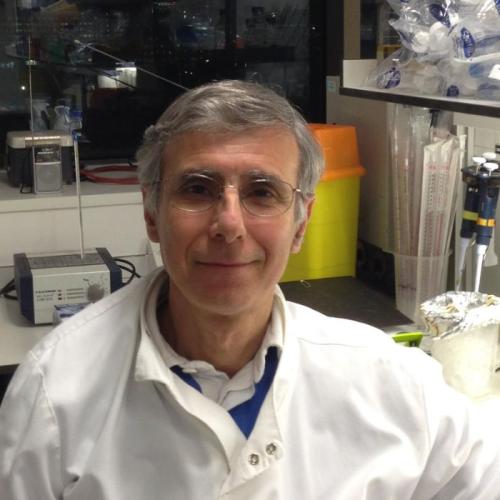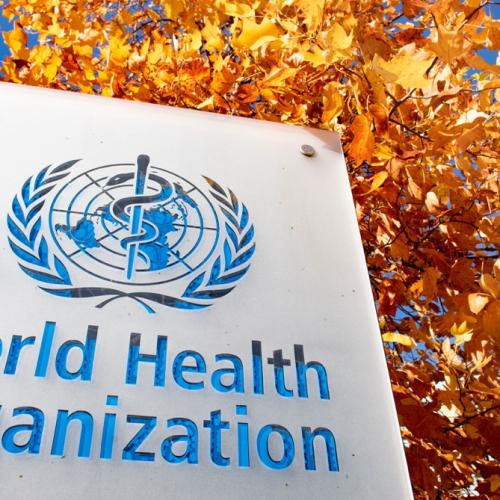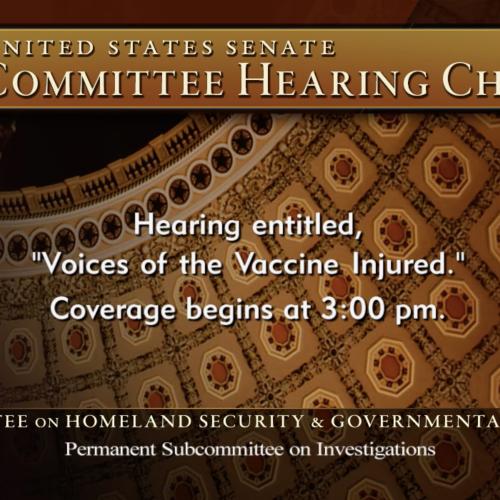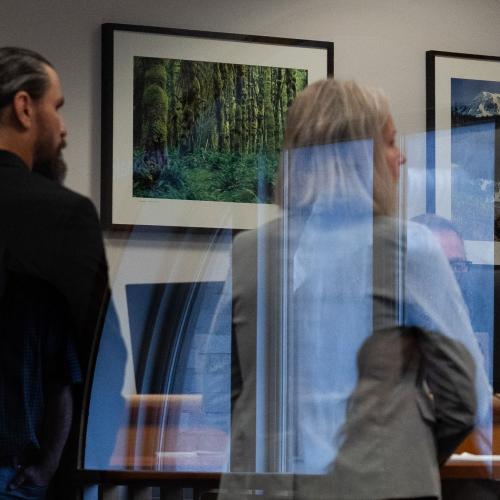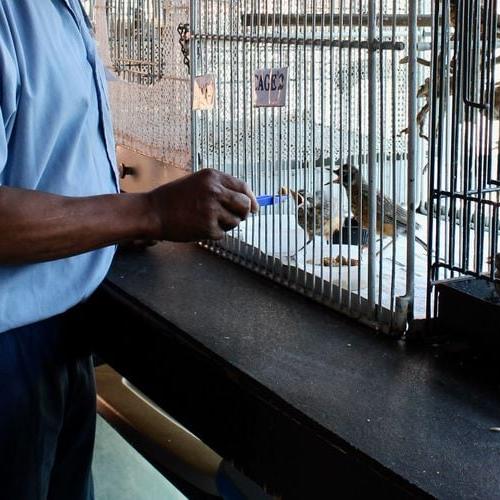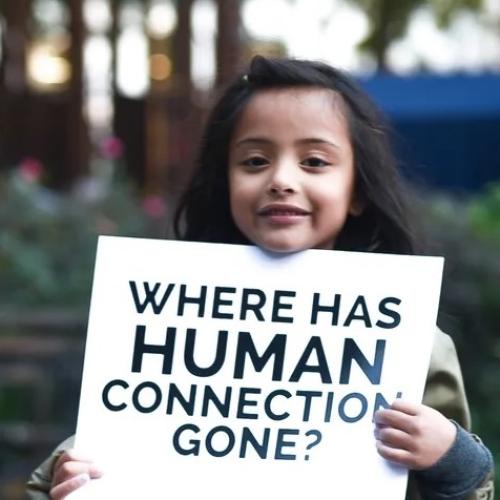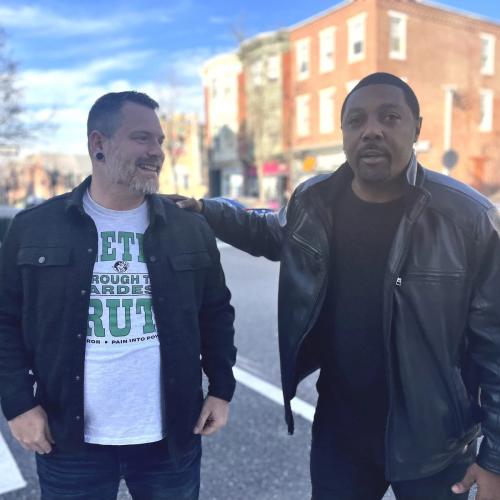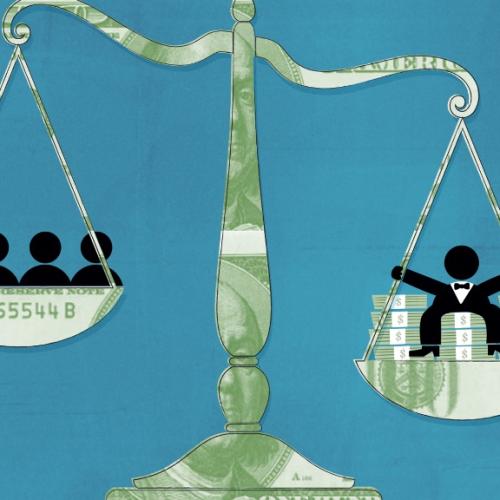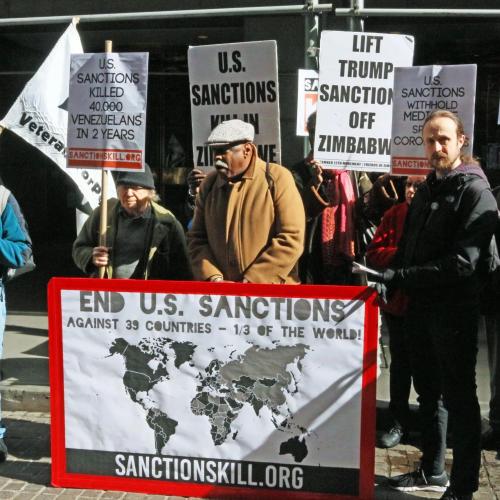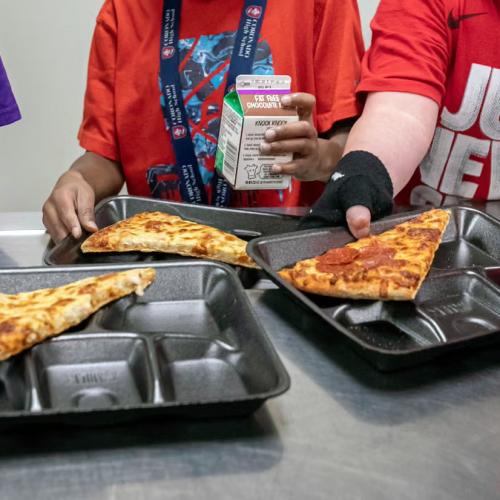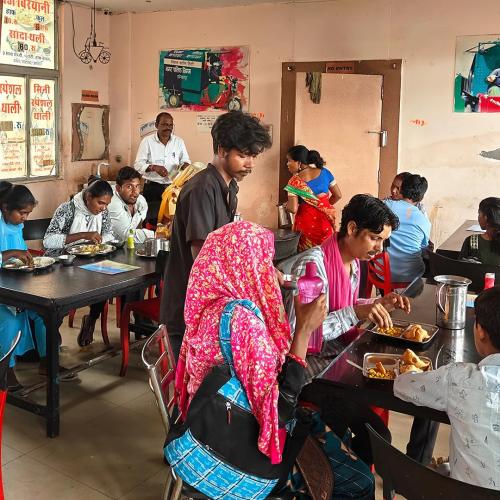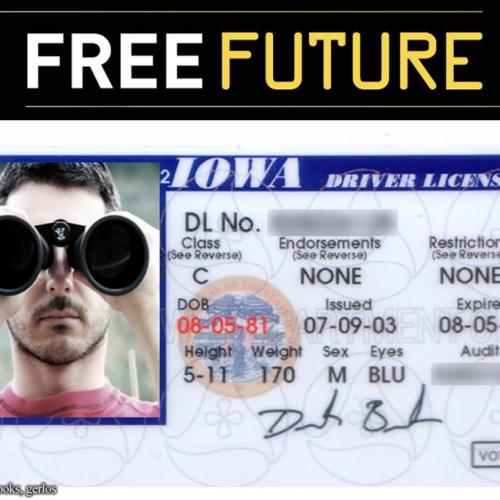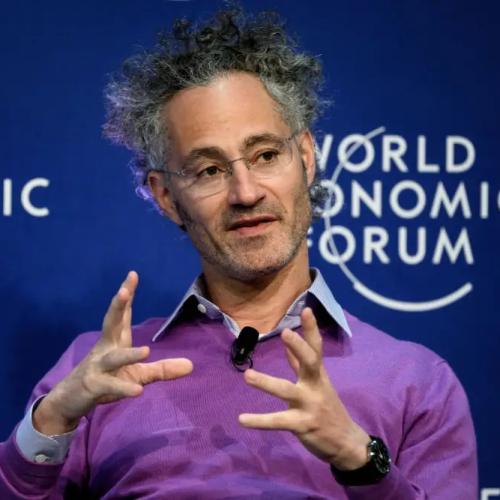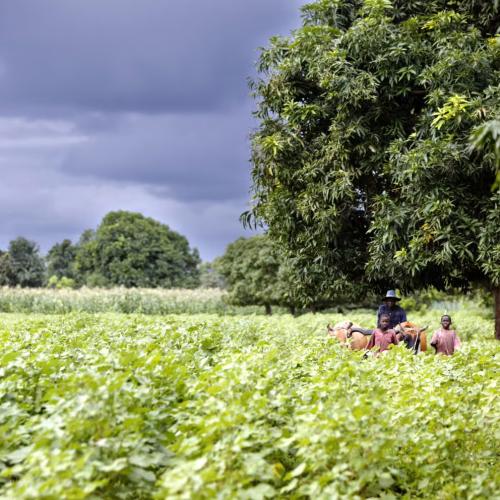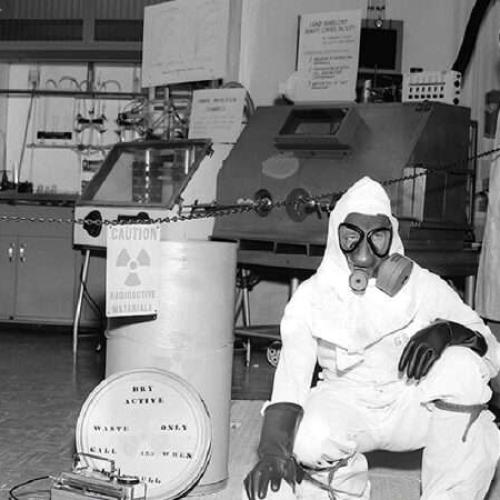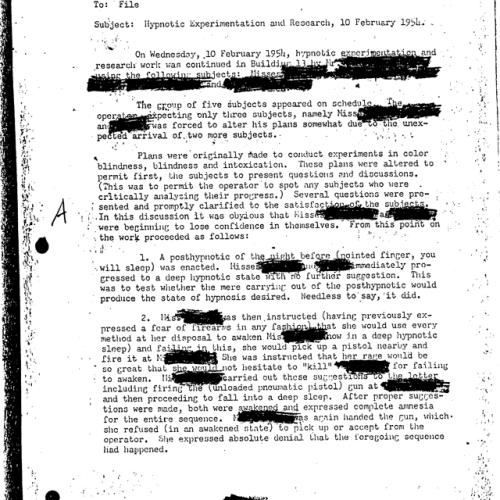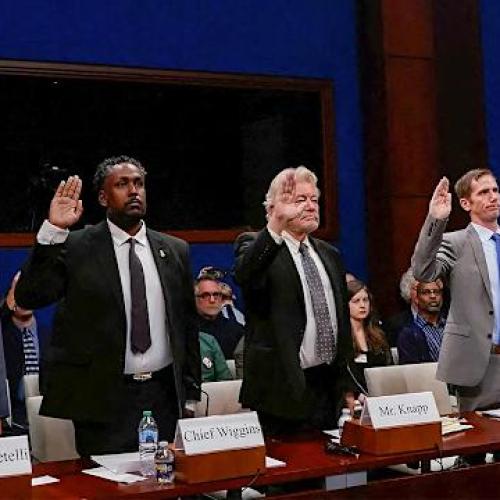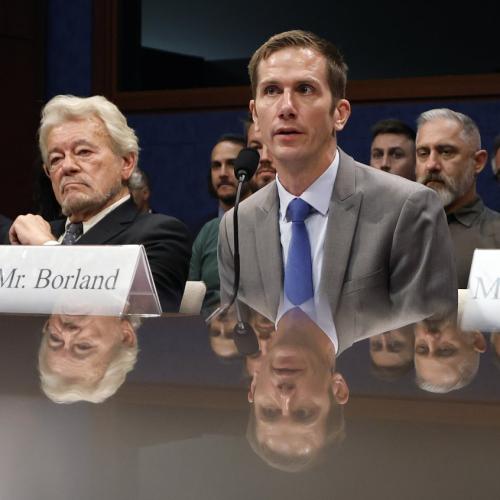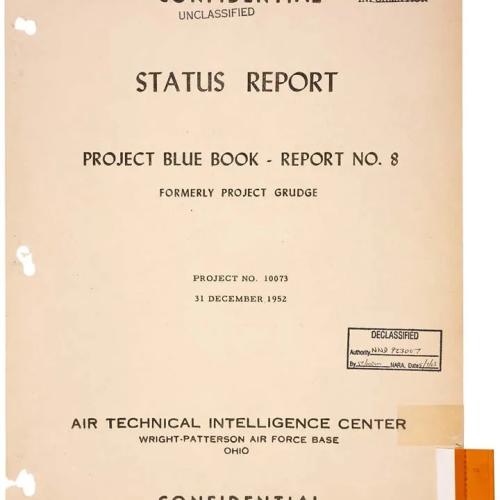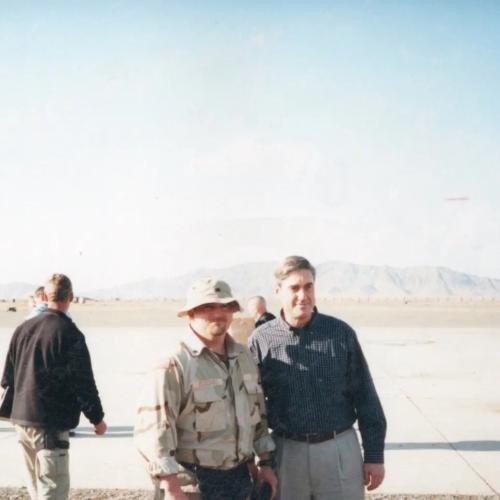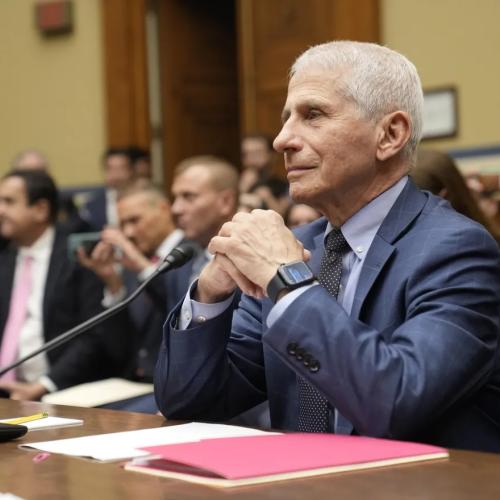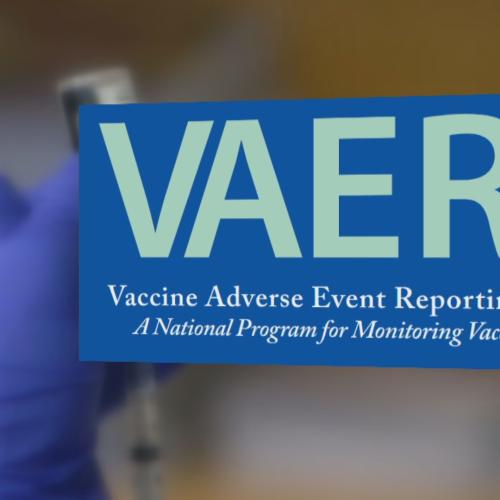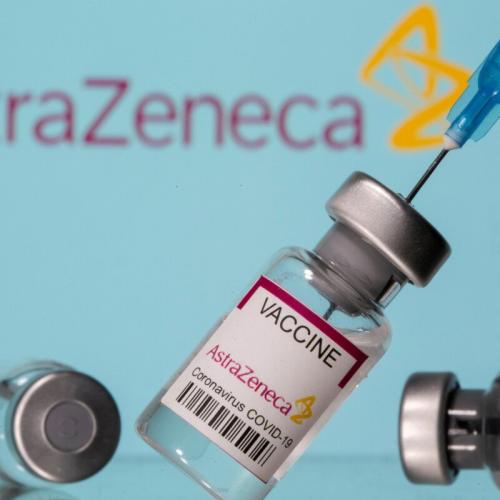Inspirational News Articles
Below are key excerpts of some of the most inspiring news articles from reliable news media sources. If any link fails to function, a paywall blocks full access, or the article is no longer available, try these digital tools.
For further exploration, delve into our Inspiration Center.
Tim Phillips, a veteran conflict-resolution expert, helped negotiate some of the most fraught conflicts in modern history — ceasefires of religious clashes in Northern Ireland and the establishment of what became South Africa's Truth and Reconciliation Commission after apartheid. Defusing an escalating situation ... first requires releasing a brain hijacked by defensive emotion. Phillips says it means saying to your opponent, for example: "I understand how important this is to you; I understand this is core to your identity and your community, and I respect your sacred values." It means reflecting your opponent's humanity back to them. A similar approach, he says, can help reduce toxic polarization. It's effective because in the heat of argument, people tend to demonize one another; counteracting that can neutralize assumptions of negative intent. Phillips says he's seen people emotionally disarm the opposition in a disagreement simply by recognizing their humanity. It can bring together fierce adversaries, and change history. Shirley Chisholm, the first Black congresswoman in the U.S., was battling for the Democratic presidential nomination with political rival ... George Wallace, a fierce segregationist. After he was shot in an attempted assassination, Chisholm visited him in the hospital and prayed at his bedside. "Wallace's daughter later said that that gesture of compassion completely changed her father," Phillips says. Wallace reportedly wept openly, and shifted his stance on racial segregation.
Note: Explore more positive stories like this in our comprehensive inspiring news articles archive focused on solutions and bridging divides.
Someday soon, in addition to prescribing medication or therapy, doctors may begin directing patients to visit a museum or join a choir. The growing practice of “social prescribing” is a way for healthcare providers to address patients’ health and wellbeing by connecting them to a range of nonclinical services, often taking the form of community arts and cultural activities. Attention on the healing power of the arts grew during the COVID-19 pandemic. A UK study found that during lockdown in 2020, individuals who spent 30 minutes per day on arts activities had lower rates of depression and anxiety, as well as greater life satisfaction. The first social prescribing pilots in the United States are kicking off on the heels of research demonstrating the long-term health benefits of arts engagement. Adolescents who regularly engage in arts activities have lower odds of behavioral problems, criminalized behaviors, and substance use and higher odds of maintaining strong social support networks. Creatively engaged older adults have 20% lower odds of depression and are more likely to have better memory, life satisfaction, and overall aging experiences. One particularly striking study found that older adults with frequent cultural engagement are less likely to use inpatient healthcare or nursing home stays. In a study of people experiencing chronic pain, doing monthly arts activities is associated with better physical wellbeing, specifically less difficulty with everyday activities.
Note: Explore more positive stories like this about healing our bodies and healing social division.
Edgard Gouveia Jr., 58, says the key to solving the world's problems is games. "I use games and narrative to mobilize crowds," says the Brazilian game inventor and co-founder of Livelab. He's worked with schools, companies, government offices and slums. "Games that can make a whole town, a whole city or even a whole country play together." And now he's developing a global game called "Jornada X" whose goal is to get kids and teenagers to save nothing less than all life on the planet. Through games and playful activities, we create a field of trust. When you create abundance of connection, abundance of possibility, people sense it right away. It doesn't matter if for 30 or 40 years they were living in scarcity. By belonging to a group that we love and that's doing good in the world – these are ways of energizing our collective power, our collective meaning. When you do some good, you feel like you have an identity. [Jornada X] starts with young people. They receive a call that's like a Matrix video that says, "Humanity isn't doing well. Society is violent and nature is dying. But you are one of a group of special kids with superpowers – things like love, helping others, strength, and friendship. As soon as they sign up, the team starts to receive missions. We might say, "Look at your neighborhood. What's wrong?" By the end of seven weeks, they have to find a solution ... Kids play war games all the time. They collaborate to kill people. It's not that they like death, but they want to have this kind of adrenaline. What could be more exciting? My answer is saving the planet in a way that adults haven't been able to."
Note: The latest US Air Force recruitment tool is a video game that allows players to receive in-game medals and achievements for drone bombing Iraqis and Afghans. What world do we want our youth to live in? Explore more positive stories like this in our inspiring news articles archive, which aims to inspire each of us to make a difference.
Finland's high levels of social trust could be one reason the country has been ranked as the world's happiest for six years in a row. As the World Happiness Report, which does the ranking, notes, most Finns expect their wallet to be returned to them if they lose it. Finns have liberated children, trust their neighbors, commune with nature, and leave work on time. But ask them what they think of the happiness report, and you'll get a surprising answer. "We're always surprised that we are still the first," Meri Larivaara, a mental-health advocate, told me in [a] Helsinki coffee shop. "Every year there is a debate like, 'How is this possible?'" In fact, locals I talked to were exasperated by the survey and even annoyed by the global perception of them as happy. Finnish people are often stereotyped as introverted and keeping to themselves. But it's also true that Finns are very content with what they have. "They call us up and just ask if we like our lives. We just say there's nothing wrong right now, maybe call back tomorrow," one local said of the survey. Maybe it's not so much that Finns are happy but that they don't have some of the intense fears you might find in other places. Finland's government sponsors one of the most robust welfare systems in the world. In 2021, the Nordic country spent 24% of its gross domestic product on social protection — the highest of any other OECD country that year. Healthcare and education are free for all residents — all the way through to the Ph.D. level.
Note: Explore more positive stories like this in our comprehensive inspiring news articles archive focused on solutions and bridging divides.
Public banks are typically operated by government or tribal authorities and, in theory, would be chartered to achieve social good and invest in communities. Only two public banks currently operate in the United States: the Bank of North Dakota, founded in 1919, and the Territorial Bank of American Samoa, founded in 2018. Organizations pushing for a public banking option exist in 37 states, according to the Public Banking Institute. In contrast to private banks, which are responsible to their shareholders, public banks are responsible to their boards and are chartered to invest in public needs. The Bank of North Dakota, for instance, is chartered to offer a “revolving loan fund” to farmers, and profits from loans are directed back into the fund to keep interest rates low. The modern movement to invest in public banks grew out of the 2008 financial crisis and was galvanized during the pandemic, fueled by a populist distrust of the banking and finance sectors. In October 2020, Representatives Alexandria Ocasio-Cortez and Rashida Tlaib introduced the federal Public Banking Act, which would allow state and local governments across the country to create public banks. In the first two months of 2021 there were sixteen bills across the country designed to pave the way for public banks. Supporters of public banks are hoping that any deposits from state and local governments can be used to fund community-based projects that have trouble getting funded by private banks.
Note: Explore more positive stories like this in our comprehensive inspiring news articles archive focused on solutions and bridging divides.
What does it take to have a challenging conversation in the era of cancel culture? For MacArthur Fellow Loretta J. Ross, the answer lies in calling in: a communicative strategy rooted in compassion, accountability, and restorative justice. Cancel culture [is] a phenomenon whereby people deemed to be moral transgressors are publicly discredited on social media platforms, and in some instances, punished through cultural, social, and professional ostracism. Professor Ross thinks this readiness to cancel a person on the basis of their beliefs is toxic. Instead, she espouses empathy and stresses the importance of context in challenging conversations. Calling in is not what you do for other people–it's what you do for yourself. It gives you a chance to offer love, grace, and respect, and to showcase one's own integrity and one's own ability to hold nuance and depth. People mistakenly think that you're doing it because you're trying to change somebody else. That's not possible. And since we don't have the power to control and change others, the only power we're left with is self-empowerment. In this sense, calling in is a conscious decision to not make the world crueler than it needs to be. We're all capable of using a technique I call "the mental parking lot" where you temporarily put aside any visceral reactions you have to what others are saying. It's a technique that requires you not to pay attention to your reaction but rather to devote your focus and respect to the person you're talking to.
Note: Smith College Professor and civil rights activist Loretta Ross worked with Ku Klux Klan members and practiced restorative justice with incarcerated men convicted or raping and murdering women. Watch Loretta Ross's powerful Ted Talk on simple tools to help shift our culture from fighting each other to working together in the face of polarizing social issues.
Students who are misbehaving are usually taken out of class and sent to the principal, who punishes the child by revoking privileges, calling home or sometimes suspending them. But students in some Baltimore schools are sent somewhere different when they are acting out: a designated meditation room where they can calm down and decompress. The Mindful Moment room is equipped with bean bags and dim lighting, and students go through calming exercises with trained staff. At Robert W. Coleman Elementary School, teachers and staff can refer students to the room for an emotional “reset” when they are worked up. The student is led through breathing exercises and is encouraged to discuss the emotions that led to an outburst. They work with the adult to come up with a plan to use mindfulness in a similar situation in the future, to prevent an outburst. After about 20 minutes in the room, they rejoin classmates. Students usually show “visible signs of relaxation and emotional de-escalation after guided practices” in the room. The program also includes a “Mindful Moment” twice a day, which leads students in breathing exercises for 15 minutes over the PA system. Students can also participate in yoga classes. It has drastically reduced suspensions, with zero reported in the 2013-14 school year. The program has also been implemented with older students, including those at Patterson High School, [which] has also seen a decrease in suspensions both in the hallways and in class.
Note: For more, see this webpage.
Ever since a 71-year-old Brazilian man rescued a struggling penguin, he's been receiving regular visits from his feathered friend. Joao Pereira de Souza, a retired bricklayer, lives ... just off the coast of Rio de Janeiro. In 2011, he spotted a starving Magellanic penguin drenched in oil on the beach near his house. Naming the penguin Dindim, Pereira de Souza fed him every day until he was strong enough to leave, according to a video from the University of Rio de Janeiro. But the penguin refused to go. Pereira de Souza decided to row a boat out into the water and drop Dindim off to encourage him to swim home. But when he rowed back to shore, he found the penguin waiting for him. "He stayed with me for 11 months and then, just after he changed his coat with new feathers, he disappeared," Pereira de Souza told TV Globo, a Brazilian TV network. Magellanic penguins regularly swim thousands of kilometres a year to breeding spots on the coast of Argentina and Chile. From time to time, penguins show up in warmer Brazilian waters. Many of Pereira de Souza's friends thought that when Dindim finally left, that was it for the human-bird friendship. But a few months later, Dindim returned and found Pereira de Souza. He visits for about four months, a ritual kept for the last five years. "He arrives in June and leaves to go home in February, and every year he becomes more affectionate," Pereira de Souza told TV Globo. De Souza appears to be the only person who can get near Dindim. If others try, he pecks them or waddles away.
Note: Don't miss a video on this incredible friendship. Explore a treasure trove of concise summaries of incredibly inspiring news articles which will inspire you to make a difference.
Meet Sam Tsemberis. He's all but solved chronic homelessness. His research, which commands the support of most scholars, has inspired policies across the nation. The results have been staggering. Late last month, Utah, the latest laboratory for Tsemberis's models, reported it has nearly eradicated chronic homelessness. Phoenix, an earlier test case, eliminated chronic homelessness among veterans. Then New Orleans housed every homeless veteran. Homelessness has long seemed one of the most intractable of social problems. For decades, the number of homeless from New York City to San Francisco surged and so did the costs. At one point around the turn of the millennium, New York was spending an annual $40,500 on every homeless person with mental issues. Tsemberis ... unfurled a model so simple children could grasp it, so cost-effective fiscal hawks loved it, so socially progressive liberals praised it. Give homes for the homeless, and you will solve chronic homelessness. Success begat success. The federal government tested the model on 734 homeless across 11 cities, finding the model dramatically reduced levels of addiction as well as shrank health related costs by half. "Adults who have experienced chronic homelessness may be successfully housed and can maintain their housing," the report declared. Utah's Gordon Walker, explain[s] how his state succeeded at eliminating homelessness and saved millions, "It was costing us in state services, health-care costs, jail time, police time, about $20,000 per person. Now, we spend $12,000 per person."
Note: Explore a treasure trove of concise summaries of incredibly inspiring news articles which will inspire you to make a difference.
Traditionally, you wouldn't gift someone a rat. Tanzania-based NGO Apopo, however, thinks rats make excellent gifts. So much so that they've launched an adopt-a-rat program, which allows participants to sponsor the animal. Despite the creatures' reputation for thieving and spreading disease, [Apopo's founder Bart] Weetjens has proven that rats can ... save lives. Apopo's rats have actually saved thousands. They are highly trained to sniff out land mines and detect tuberculosis - two scourges that have had a tremendously negative impact across the African continent. And his rats are fast. A single rat can clear 200 square feet in an hour (done manually, the same area would take 50 hours to clear). A TB-detection rat can evaluate 50 samples in eight minutes (almost a day's work for a lab technician). In 2006, Weetjens started testing his "hero rats," as he dubs them, on the mine fields in Mozambique, a country that at that time was one of the worst affected by landmines, thanks mainly to a civil war that ended in 1992. Since then, Apopo has cleared the country of 6,693 landmines, 29,934 small arms and ammunition, and 1,087 bombs. Mozambique is on track to be free of landmines by the year's end. In 2005, the World Health Organization (WHO) declared a TB crisis in Africa. It's a problem Weetjens realized he could address with his sniffer rats. So far, they've analyzed over 260,000 samples from health clinics in Dar es Salaam. They are cheap to train, cheaper to procure, and plentiful.
Note: Explore a treasure trove of concise summaries of incredibly inspiring news articles which will inspire you to make a difference.
In the 1980s, leading consultants were skeptical about cellular phones. The handsets were heavy, batteries didnt last long, coverage was patchy, and the cost per minute was exorbitant. The experts are saying the same about solar energy now. They say that solar is inefficient, too expensive to install, and unreliable, and will fail without government subsidies. They too are wrong. Solar will be as ubiquitous as cellular phones are. Futurist Ray Kurzweil notes that solar power has been doubling every two years for the past 30 years as costs have been dropping. He says solar energy is only six doublings or less than 14 years away from meeting 100 percent of todays energy needs. By Kurzweils estimates, inexpensive renewable sources will provide more energy than the world needs in less than 20 years. In places such as Germany, Spain, Portugal, Australia, and the Southwest United States, residential-scale solar production has already reached grid parity with average residential electricity prices. In other words, it costs no more in the long term to install solar panels than to buy electricity from utility companies. The prices of solar panels have fallen 75 percent in the past five years alone and will fall much further as the technologies to create them improve and scale of production increases. By 2020, solar energy will be price-competitive with energy generated from fossil fuels on an unsubsidized basis in most parts of the world. Within the next decade, it will cost a fraction of what fossil fuel-based alternatives do. Despite the skepticism of experts and criticism by naysayers, there is little doubt that we are heading into an era of unlimited and almost free clean energy.
Note: This article also points out how some big energy companies and the Koch brothers are lobbying to stop alternative technologies from flowering. Read through a rich collection of energy news articles with inspiring and revealing news on energy developments. And explore a treasure trove of concise summaries of incredibly inspiring news articles which will inspire you to make a difference.
Swedish prisons have long had a reputation around the world as being liberal and progressive. The head of Sweden's prison and probation service, Nils Oberg, announced in November that four Swedish prisons are to be closed due to an "out of the ordinary" decline in prisoner numbers. Although there has been no fall in crime rates, between 2011 and 2012 there was a 6% drop in Sweden's prisoner population, now a little over 4,500. A similar decrease is expected this year and the next. The Swedes [have] managed to maintain a broadly humane approach to sentencing, even of the most serious offenders: jail terms rarely exceed 10 years; those who receive life imprisonment can still apply to the courts after a decade to have the sentence commuted to a fixed term, usually in the region of 18 to 25 years. Sweden was the first country in Europe to introduce the electronic tagging of convicted criminals and continues to strive to minimise short-term prison sentences wherever possible by using community-based measures proven to be more effective at reducing reoffending. The overall reoffending rate in Sweden stands at between 30 and 40% over three years around half that in the UK. One likely factor that has kept reoffending down and the rate of incarceration in Sweden below 70 per 100,000 head of population less than half the figure for England and Wales is that the age of criminal responsibility is set at 15. Unlike the UK, where a life sentence can be handed down to a 10-year-old, in Sweden no young person under the age of 21 can be sentenced to life and every effort is made to ensure that as few juvenile offenders as possible end up in prison.
Note: For a Time magazine article showing how Norway's prisons actually rehabilitate prisoners so that they can more easily fit back in society, click here. For a treasure trove of great news articles which will inspire you to make a difference, click here.
The psychedelic drug in magic mushrooms may have lasting medical and spiritual benefits, according to new research from Johns Hopkins School of Medicine. The mushroom-derived hallucinogen, called psilocybin, is known to trigger transformative spiritual states, but at high doses it can also result in "bad trips" marked by terror and panic. "The important point here is that we found the sweet spot where we can optimize the positive persistent effects and avoid some of the fear and anxiety that can occur and can be quite disruptive," says lead author Roland Griffiths, professor of behavioral biology at Hopkins. Giffiths' study involved 18 healthy adults, average age 46. Nearly all the volunteers were college graduates and 78% participated regularly in religious activities; all were interested in spiritual experience. Fourteen months after participating in the study, 94% of those who received the drug said the experiment was one of the top five most meaningful experiences of their lives; 39% said it was the single most meaningful experience. Their friends, family members and colleagues also reported that the psilocybin experience had made the participants calmer, happier and kinder.
The Plasma Converter ... can consume nearly any type of waste from dirty diapers to chemical weapons by annihilating toxic materials in a process ... called plasma gasification. A 650-volt current passing between two electrodes rips electrons from the air, converting the gas into plasma. The plasma arc is so powerful, it disintegrates trash into its constituent elements by tearing apart molecular bonds. The system is capable of breaking down pretty much anything except nuclear waste. The only by-products are an obsidian-like glass [and] a mixture of primarily hydrogen and carbon monoxide that can be converted into a variety of marketable fuels, including ethanol, natural gas and hydrogen. Perhaps the most amazing part of the process is that its self-sustaining. Once the cycle is under way, the 2,200F syngas is fed into a cooling system, generating steam that drives turbines to produce electricity. About two thirds of the power is siphoned off to run the converter; the rest can be used on-site for heating or electricity, or sold back to the utility grid. Even a blackout would not stop the operation of the facility. New York City is already paying an astronomical $90 a ton to get rid of its trash. According to Startech, a few 2,000-ton-per-day plasma-gasification plants could do it for $36. Sell the syngas and surplus electricity, and you'd actually net $15 a ton. But the decision-making bureaucracy can be slow, and it is hamstrung by the politically well-connected waste-disposal industry. Startech isn't the only company using plasma to turn waste into a source of clean energy. A handful of start-ups - Geoplasma, Recovered Energy, PyroGenesis, EnviroArc and Plasco Energy, among othershave entered the market in the past decade.
Note: Why hasn't this amazing, proven machine and technology made front page headlines? Read the exciting article at the link above to find how it is already being used. For why you don't know about it, read this excellent article on how such inventions are suppressed.
A self taught artist who says her inspiration comes from above.... [These] Paintings ... are spiritual, emotional, and created by a 12-year-old prodigy. Her name is Akiane. She picked up the brush when she was just six years old, but the visions -- what she calls inspiration from God -- started when she was just four. She began to describe to her mother in great detail her visits to heaven. "All the colors were out of this world. There are hundreds and millions of more colors that we don't know yet." Her mother remarkably was an atheist. The concept of God [was] never discussed in their home. [Akiane:] "I explained to her you have to believe me. This is a different way ... a way that's so mysterious that God wants me to go through. The visions to me [are] like he's explaining himself to me and what he does. " To four-year-old Akiane, God quickly became a part of her daily life, and eventually became a part of her family's life, too. Her talent doesn't stop at her art work. Only a few months ago she decided to learn the piano and is now already composing her own music. But it is her painting that truly captures the incredible spirituality of this young girl. She is a self taught painter, and as she grows older her paintings grow more expressive, more colorful, [and] more complex. A girl -- who armed only with a brush and some paints -- is determined to capture the essence of her faith, and hopefully along the way inspire others to feel the same way. [Akiane:] "It's just so beautiful! The most important things in this world is faith, because without faith you cannot communicate with God."
Note: The above CNN link takes you to a three-minute video (after commercial) showing the incredible talents of this amazingly gifted girl. If the link fails, click here. For her website, click here. For a collection of videos showing Akiane and her inspiration as she gets older, click here.
From the ages of 2 to 6, James Leininger seemed to recall in striking detail a "past life" he had as a World War II Navy pilot who was shot down and killed over the Pacific. The boy knew details about airplanes and about pilot James Huston Jr. that he couldn't have known. James' parents say he also had terrible nightmares about a plane crashing and a "little man" unable to get out. James, now 8, stills loves airplanes, but he is free of those haunting images of the pilot's death. Jim Tucker, a child psychiatrist and medical director of the Child and Family Psychiatric Clinic at the University of Virginia, is one of the few researchers to extensively study the phenomenon of children who seem to have memories of past lives. He says James' case is very much like others he has studied. "At the University of Virginia, we've studied over 2,500 cases of children who seem to talk about previous lives when they're little," Tucker said. "They start at 2 or 3, and by the time they're 6 or 7 they forget all about it and go on to live the rest of their lives." Tucker -- the author of Life Before Life: A Scientific Investigation of Children's Memories of Previous Lives -- has seen cases like James' where children make statements that can be verified and seem to match with a particular person. "It means that this is a phenomenon that really needs to be explored," Tucker said. "James is one of many, many kids who have said things like this." While about three-fourths of Americans say they believe in paranormal activity, 20 percent believe in reincarnation, according to a 2005 Gallup poll.
Note: Watch an engaging ABC News video clip of this incredible story. Then enjoy an even better Fox News clip. Read an excellent online lesson presenting powerful evidence of past lives and more.
Eighty-five times [Dick Hoyt has] pushed his disabled son, Rick, 26.2 miles in marathons. Eight times he's not only pushed him 26.2 miles in a wheelchair but also towed him 2.4 miles in a dinghy while swimming and pedaled him 112 miles in a seat on the handlebars -- all in the same day. Dick's also pulled him cross-country skiing, taken him on his back mountain climbing and once hauled him across the U.S. on a bike. And what has Rick done for his father? Not much -- except save his life. This love story began in Winchester, Mass., 43 years ago, when Rick was strangled by the umbilical cord during birth, leaving him brain-damaged and unable to control his limbs. "He'll be a vegetable the rest of his life," Dick says doctors told him. But the Hoyts weren't buying it. [Eventually,] rigged up with a computer that allowed him to control the cursor by touching a switch with the side of his head, Rick was ... able to communicate. First words? "Go Bruins!" And after a high school classmate was paralyzed in an accident and the school organized a charity run for him, Rick pecked out, "Dad, I want to do that." Yeah, right. How was Dick, a self-described "porker" who never ran more than a mile at a time, going to push his son five miles? Still, he tried. "Then it was me who was handicapped," Dick says. "I was sore for two weeks." That day changed Rick's life. "Dad," he typed, "when we were running, it felt like I wasn't disabled anymore!"
Note: Don't miss the entire incredibly moving story with links to the Hoyt's beautiful website, inspiring photos, a deeply touching video clip, and lots more on this webpage.
Probably the oldest mystery to vex mankind is what, if anything, occurs after death. For a decade, Kenneth Ring, a psychology professor and researcher at the University of Connecticut, has looked into the question through the near-death experiences of others. Mr. Ring ... talked with hundreds of people between the ages of 18 and 84 who have come close to physical death. [His books] Life at Death [and] Heading Toward Omega both deal with near-death experiences and how they change people's lives. A near-death experience ... often happens to individuals who find themselves on the verge of imminent biological death. It involves ... a sense of the most profound peace and well-being that is possible to imagine. It's a sense of being separate from the physical body and sometimes being able to see it as though a spectator off to one side or from up above. These people have a sense of moving through a dark space or tunnel toward a radiantly beautiful white or golden light. They are absorbed in that light, having in some cases a panoramic life review in which virtually everything that they've ever done in their life they're able to see; perhaps meeting the spirits of deceased love ones or friends. And in some cases, they are asked to make a decision as to whether they would like to continue or go back to their body. The most powerful antidote to the fear of death is coming close to death ... and remembering one of these experiences. After having a near-death experience, people believe the end of life isn't [the end]; they believe in some sort of life after death. [Those] who have a near-death experience almost totally lose their fear of death.
Note: The documented experiences of those who have been declared clinically dead and come back to life are some of the most mind-boggling and inspiring cases to have ever surfaced. Read some of the most amazing of these cases and explore other excellent resources on the topic.
‘Contact theory’ has been shown to lead to harmony and an enlarged sense of a common good, even when there are limited resources and competing interests. It's a theory that suggests that the more contact that people have, the more willing they are to rehumanize and understand each other, even across their personal differences. It originated in the 50s with the work of Gordon Allport. After World War II, he asked himself, how can we reduce conflict in society? He put forward that, under the right conditions, having positive experiences with people of another social, ethnic, cultural, religious backgrounds could improve our tolerance and reduce our prejudice against them. 50 years later, the vast majority of studies show that it does work. If you talk about moving beyond past violence and having a harmonious society, one of the biggest things that could hamper having these contact experiences [is] the homophilia principle, where you go with your own group. It's easy to avoid having experiences with other groups. But once we do, they're very beneficial. We spoke with someone named Ali Abu Awad [who] is a Palestinian activist. He said he never had contact with an Israeli ... until he was in his 30s. And they were brought together into a group. This Israeli woman was crying, and he was crying. They were both grieving the loss of family members of the conflict. That moment of contact actually changed the whole direction of his life because he realized that this Israeli woman was human like he was. He ended up becoming an activist working toward a solution that humanizes Israelis and humanizes Palestinians at the same time.
Note: This summary is a transcript of an interview with Jasper Van Assche, professor at the University of Ghent in Belgium. Explore more positive stories like this in our comprehensive inspiring news articles archive focused on solutions and bridging divides.
In 1986, millions of Filipinos took to the streets of Manila in peaceful protest and prayer in the People Power movement. The Marcos regime folded on the fourth day. In 2003, the people of Georgia ousted Eduard Shevardnadze through the bloodless Rose Revolution, in which protestors stormed the parliament building holding the flowers in their hands. Earlier this year, the presidents of Sudan and Algeria both announced they would step aside after decades in office, thanks to peaceful campaigns of resistance. In each case, civil resistance by ordinary members of the public trumped the political elite to achieve radical change. There are, of course, many ethical reasons to use nonviolent strategies. But compelling research by Erica Chenoweth, a political scientist at Harvard University, confirms that civil disobedience is not only the moral choice; it is also the most powerful way of shaping world politics. Looking at hundreds of campaigns over the last century, Chenoweth found that ... it takes around 3.5% of the population actively participating in the protests to ensure serious political change. Overall, nonviolent campaigns were twice as likely to succeed as violent campaigns: they led to political change 53% of the time compared to 26% for the violent protests. Of the 25 largest campaigns that they studied, 20 were nonviolent, and 14 of these were outright successes. Overall, the nonviolent campaigns attracted around four times as many participants (200,000) as the average violent campaign (50,000).
Note: Explore a treasure trove of concise summaries of incredibly inspiring news articles which will inspire you to make a difference.
Important Note: Explore our full index to revealing excerpts of key major media news articles on several dozen engaging topics. And don't miss amazing excerpts from 20 of the most revealing news articles ever published.













